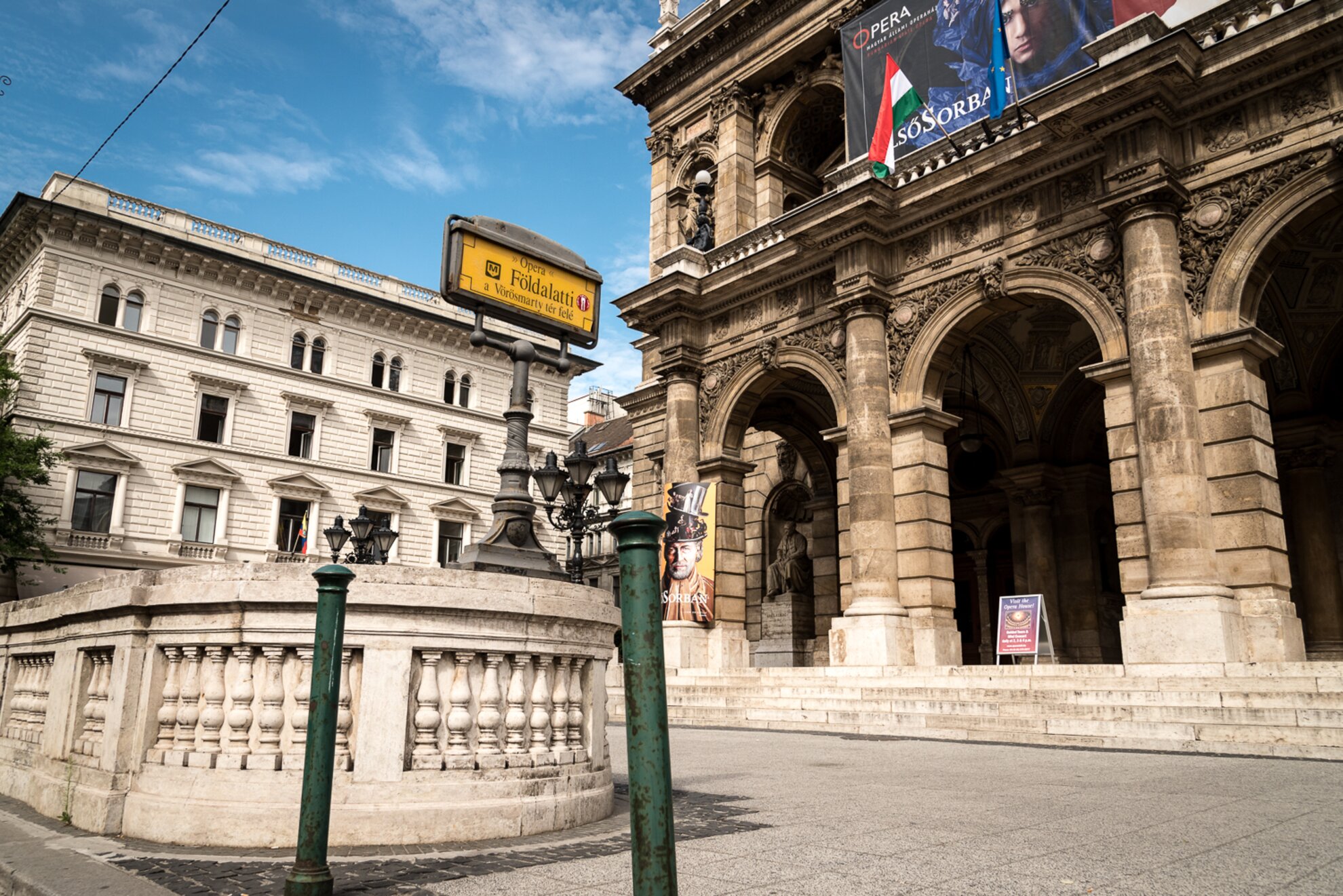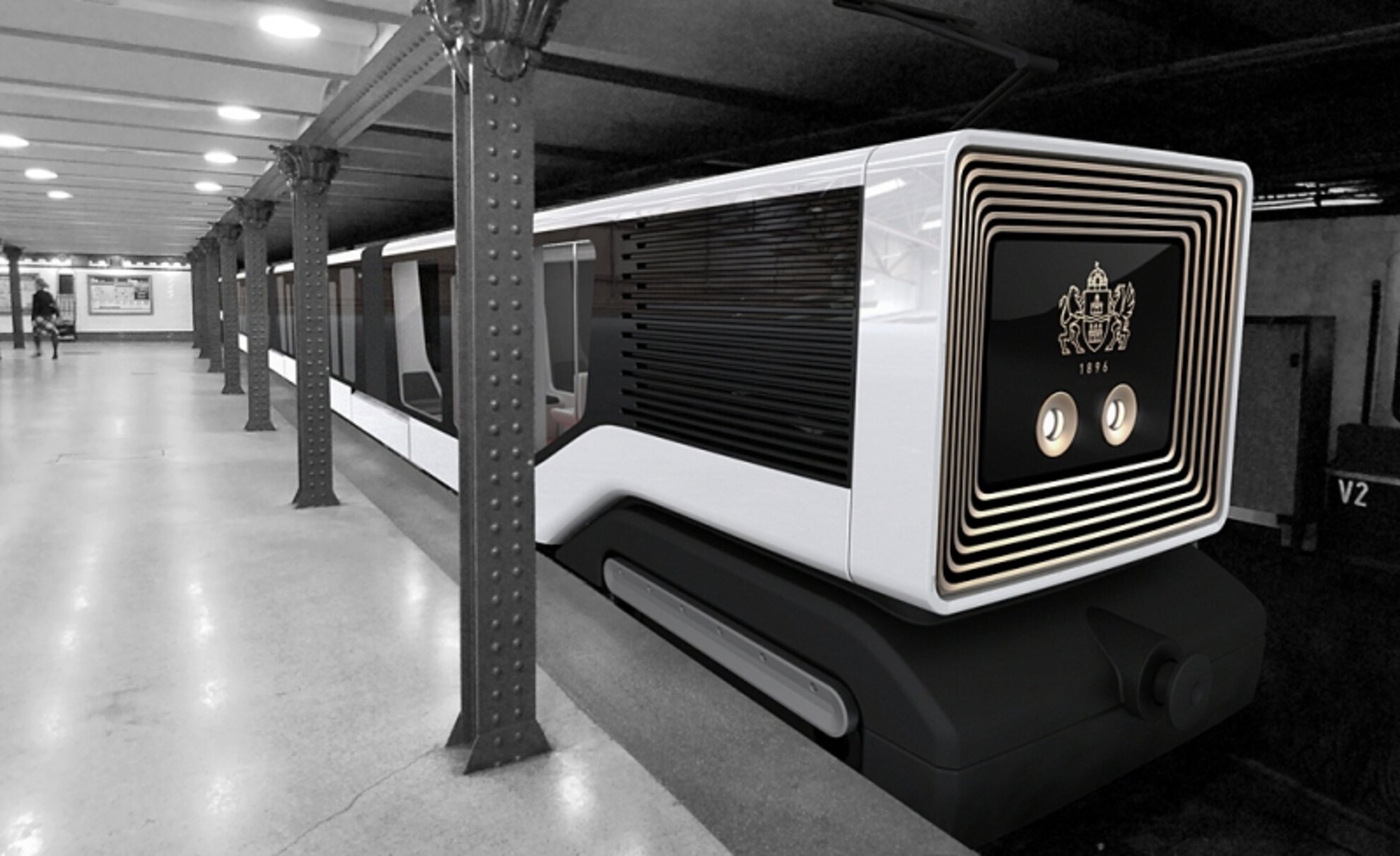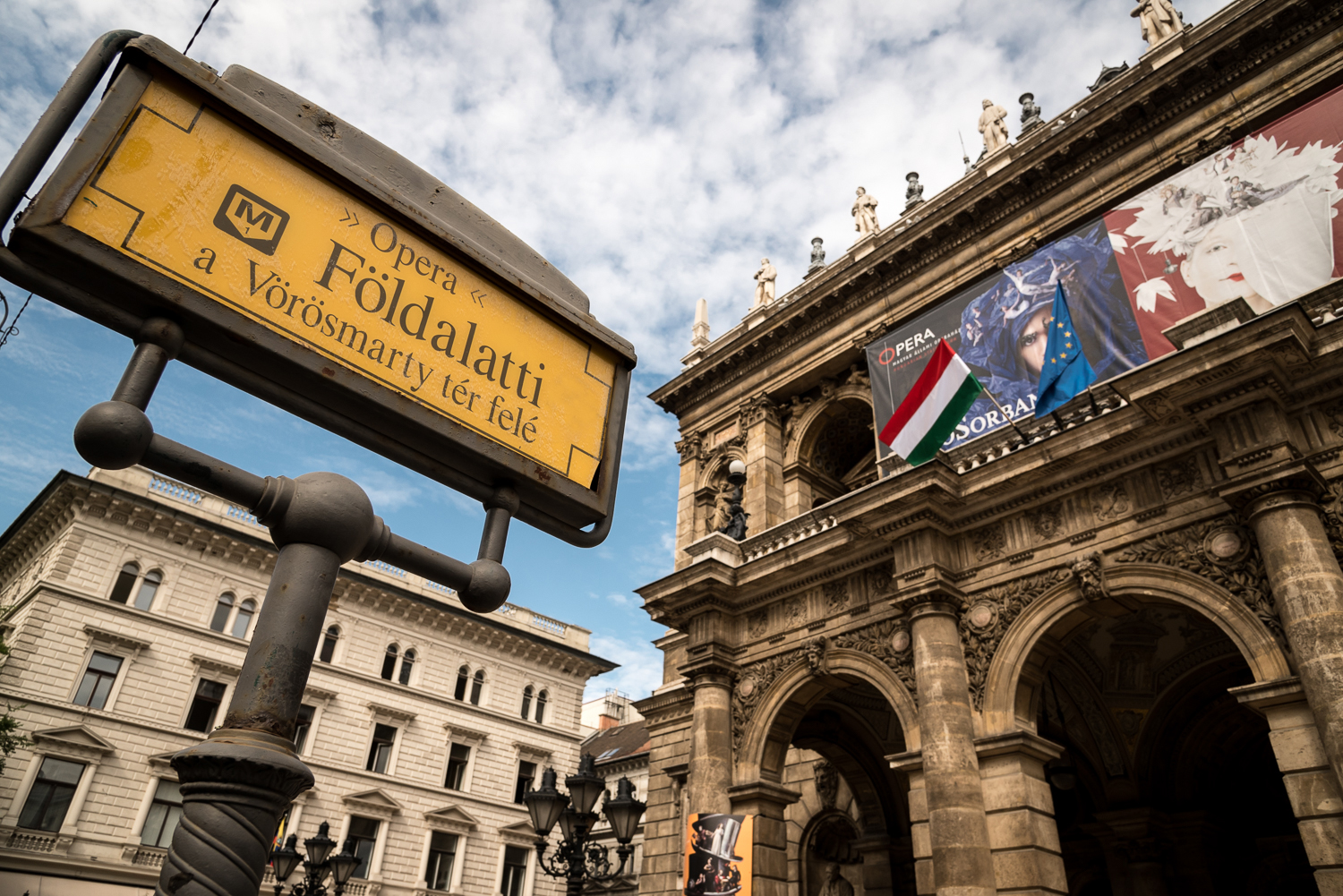As Budapest officials were preparing for the 1896 Millennial Jubilee – a huge celebration to commemorate the thousandth anniversary of the Magyars’ arrival in Hungary – they needed a way to transport festivalgoers from downtown Pest to the main festivities in City Park. Following the example of London’s pioneering underground system, the Hungarian National Assembly commissioned Siemens and Halske AG to build the first electrified underground line in Continental Europe beginning in 1894 – with a strict construction deadline to ensure that the subway would be functional in time for the celebrations. The millennium metro started operating on May 2, 1896, with one of its very first passengers being Austrian Emperor and King of Hungary Franz Joseph I aboard a specifically designed royal subway car, and soon afterwards this then-innovative underground line was transporting high-spirited crowds to join the grand jubilee events.
Since then, this iconic and stately sight of Budapest continually serves as a remarkable moving monument of downtown Budapest, as the “yellow line” still carries an increasing number of passengers from all walks of life through its elegantly preserved stations, and was a major factor in Budapest’s earning a listing as a UNESCO World Heritage Site in 2002.At the Underground Railway Museum in the underpass of Deák Ferenc Square next to the BKK information counter, visitors are taken back over a century in time. Set up within one of the original Metro 1 platforms – eliminated from service in 1955 when Budapest began constructing its second subway line to intersect with the first underground here – spectators can experience something similar to what 19th-century passengers first laid their eyes on here, as the intense smell of oil circulates in the air surrounding a trio of historic electric subway cars. These nostalgic wagons are on display in the museum (one of them equipped with manually-opening doors) along with building logs, blueprints, and the original Zsolnay tiles that once marked the underground’s Gizella Square terminus (modern-day Vörösmarty Square). We can also admire old photos of the long-gone structures that once covered Metro 1 staircases at almost every stop, and admire their stone arches built with an intricate design. The museum is open from Tuesday to Sunday between 10am and 5pm.Today, riding on the Millennium Underground is an almost unmissable activity in the Hungarian capital, whether taking the Metro 1 for its historical value or just to get around the city – the subway stops at significant locations that are still actively buzzing along its urban route. Over time the yellow line was extended and reconstructed with new stations added to its path, so now the 4.4-kilometer underground traverses 11 stations, providing access to many major city landmarks along the way. A ride aboard provides sensations of the city’s enduring belle-époque grace blended with the fascination of this modern metropolis.The historic voyage kicks off at the southern terminus in the middle of majestic Vörösmarty Square, at the end of Váci Street across the legendary Gerbeaud House confectionery. From here travelers head towards Deák Ferenc Square, now the intersection and transport junction for three of Budapest’s underground lines. The square is a popular meeting spot for locals and visitors, where life is buzzing all year round, boasting a good number of terrace bars and restaurants during the summer months.The subway continues on to travel below Andrássy Avenue beginning with the Bajcsy-Zsilinszkystation, and runs on towards the Hungarian State Opera House, a splendid neo-Renaissance architectural masterpiece and high-class cultural hub hosting performances since 1884. Across the grand boulevard we can admire the intriguing design of the Drechsler Palace (formerly the State Ballet Institute), a long-abandoned building that may be transformed into a luxury hotel by 2017. To the delight of shopaholics, this section of Andrássy is also home to a variety of high-end designer boutiques.

The underground journey then continues to Oktogon, another major intersection named after its octagonal shape. The subway moves on towards Vörösmarty Street, and stops a stone’s throw away from the House of Terror Museum – occupying a significant building with a dark history, where countless atrocities were committed by officers of Hungary’s occupying Nazis and Communists alike. The next station is Kodály Körönd, a huge traffic circle surrounded by ornate mansions, small parklands, and statues depicting Hungarian heroes; groundbreaking Hungarian composer Zoltán Kodály lived here, and the memorial museum in his former home now welcomes the public.

Continuing on the Millennium Metro below the surface of Andrássy, passing through the Bajza Street station surrounded by an elegant neighborhood of old villas and embassies, we arrive at legendary Heroes’ Square, one of Budapest’s major landmarks and a postcard superstar, showcasing an iconic colonnade of statues depicting major figures of Magyar history – the prime attraction of the 1896 jubilee – including the seven Chieftains of the Magyars and other important national leaders, as well as the Tomb of the Unknown Soldier.From this breathtaking scene, the metro drops us right next to Széchenyi Bath, Budapest’s renowned thermal-spa complex, in the heart of City Park. This historic green space is home to many notable sights, such as the imposing Vajdahunyad Castle, the Budapest Zoo and Botanical Garden, and the renowned Gundel Restaurant. From this point the underground leaves the historical journey behind and proceeds on its extended route towards the northern terminus at Mexikói Road.Looking ahead, while some development plans are being revealed, the future of the Millennium Metro is still unclear. There are proposals to extend the line in both directions, with more transfer points, and the 40-year-old vehicles may be replaced by avant-garde subway cars: these would be automated open-air conveyances with spacious interiors, an increased passenger capacity, and a cutting-edge exterior.

While these final plans are yet to be confirmed, we hope that whatever the outcome will be, our beloved yellow line will preserve its historic characteristics that provide a distinct feel of classic charm to every passenger embarking on a journey through time with each ride aboard the Metro 1.




